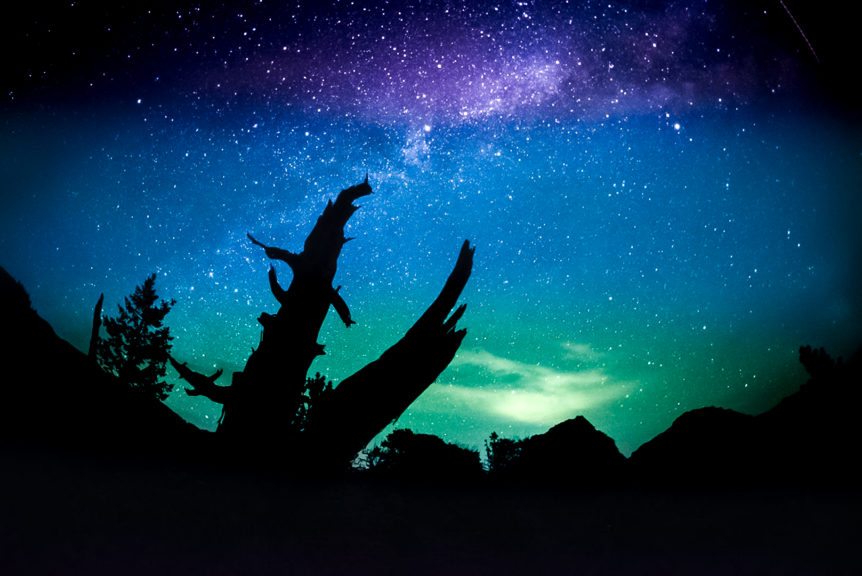
An enjoyment of living in the country is abundant clear night sky, usually more than seen in urban settings. As most of us look at the multitude of bright stars twinkling in a black sky, we suddenly want to know more about them. We might have forgotten the answers to simple questions like: What are stars? Why are some brighter than others?
To refresh our memories, a star is a luminous sphere of plasma held together by its own gravity. The nearest star to Earth is the Sun. Other stars are visible from Earth during the night, appearing as a multitude of fixed luminous points in the sky due to their immense distance from Earth.
Alan MacRobert, Senior Editor of Sky and Telescope asks, “Did you know you can see a galaxy 2½ million light years away with your unaided eyes and craters on the moon with binoculars? Countless wonders await you on a clear night. The first step is simply to look up and ask, ‘What’s that?’ Begin gazing at the stars from your backyard, and you’ll be taking the first step toward a lifetime of cosmic exploration.”
How and Where to Look?
For the casual observer, locating stars, planets, and other astronomical objects in the night sky is most easily accomplished with the help of a star map, according to The University of Texas McDonald Observatory. “Many good books are available containing extensive maps of star positions for the entire sky, while magazines such as StarDate, Astromomy, and Sky & Telescope provide monthly maps that show locations of the planets.
To get started in learning about the starry sky obtain an evening sky map, locate a compass to help align your sight in the right direction and practice identifying planets, individual stars and constellations. For the first few star gazing sessions, it might be beneficial to ask another amateur astronomer to join you.
“Ransack your public library for astronomy basics,” recommends MacRobert. “Astronomy is a learning hobby. Its joys come from intellectual discovery and knowledge of the cryptic night sky. But you have to make these discoveries, and gain this information by yourself. In other words, you need to become self-taught.
“The public library is the beginner’s most important astronomical tool. Comb the astronomy shelf for books about the basic knowledge you need to possess, and guidebooks that show what you can see in the wide universe. Read about those stars and constellations you’re finding with the naked eye, and about how stars change through the night and seasons. If the library doesn’t have enough material, cruise the bookstores.”
“Of course the web is a tremendous resource, although it is a hodgepodge,” MacRobert adds. “There are excellent beginner’s sites; but what you need is a coherent, well-organized framework in which to put your increased knowledge as you grow in your new hobby.”
Binoculars make an ideal first telescope…
“Binoculars make an ideal first telescope – for several reasons,” suggests MacRobert. “They have a wide field of vision, making it easy to find your way around; whereas, a higher-power telescope magnifies a tiny, hard-to-locate bit of sky. Binoculars show a view that’s right- side up and straight in front of you, making it easier to see where you are pointing.
“For astronomy, the larger the front lenses the better. High optical quality is also important, more so than for binoculars that are used on daytime scenes. Modern image-stabilized binoculars are a tremendous boon for astronomy, although they are expensive. Any binoculars lying in the back of your closet are enough to launch an amateur astronomy career.”
What You Can See.
“What you see in the night sky depends on your location, the season, and the time,” say McDonald Observatory Outreach and Education staff. “Planets orbit the Sun, so they change position when compared to the stars. The planet Venus, sometimes called the evening star or morning star, is the second brightest object in the night sky – only the Moon is brighter. Jupiter, Mars, and Saturn are sometimes referred to as the morning or evening star, but they often appear later in the night than Venus. Planets reflect a steady light, unlike the twinkling stars, which are much farther from Earth.
“When either the morning or evening star appears close to the Sun as viewed from Earth, sunset or sunrise watchers are treated to star-like brilliance of one of our planetary neighbors. The morning star may be brighter than any of the true stars in the sky at one time of the year and then later, as its orbit carries it behind and to the other side of the sun, it appears as an evening star.”
“Binoculars will reveal dozens of star clusters, galaxies, and nebula,” continues MacRobert. “Binoculars will show the ever-changing positions of Jupiter’s moons and the crescent phases of Venus. They can aid in the identification of dozens of craters, plains and mountains on the Moon. You can split scores of interesting double stars and follow the fading and brightening of numerous variable stars.”
A few terms in the above paragraph may need to be defined for those of us who are unschooled in astronomy. Nebula is a cloud of gas and dust in outer space, visible in the night sky either as an indistinct bright patch or as a dark silhouette against other luminous matter. A double star is a pair of stars that appear close to each other in the sky as seen from Earth; whereas, variable stars change brightness by as much as twenty magnitudes over periods of a fraction of a second to years, depending on the type of variable star.
The starry girth of the Milky Way is one of the most spectacular and awe-inspiring sights in the night sky…
“The starry girth of the Milky Way is one of the most spectacular and awe-inspiring sights in the night sky,” say McDonald Observatory educators. “The best time for viewing the Milky Way is mid- to late summer and again in midwinter, when the diffused glow of hundreds of star clouds arch almost directly overhead in the early evening hours. Dark locations – as usual – are preferable, but the bright swath of the Milky Way is visible even from urban areas.
“Under dark skies, you may be able to see one or several of the hundreds of artificial satellites orbiting Earth almost any night of the year. Look for a faint star-like object moving steadily across the sky. Because light from a satellite is entirely reflected from the sun, they will frequently blink in and out as they rotate and as different areas of their surface face the sun. As they pass into the darkness of the Earth’s shadow, they appear to vanish altogether. Spotting geostationary satellites, whose positions remain fixed above Earth, is a bit trickier and requires exact location data.”
Look for the International Space Station. It is also visible from Earth.
Star gazing is a nice after-dinner event that is relaxing and a great way to spend the evening with family and friends. Parties focused on star gazing can be a lot of fun, especially when guests are given a list of heavenly bodies to identify and a prize is awarded to the person that identifies the most. Some land owners make their property available to the public for star gazing and charge a fee which serves as an additional revenue stream. Beautiful night skies is definitely one of the pleasures of living in the country.
Image credit: View of starry sky on <a href=”http://www.landsofamerica.com/property/1246-acres-in-Park-County-Wyoming/3237037″>Four Bear Ranch in Park County, Wyoming</a>
This article was originally published in the Winter 2015 Issue of Lands of Texas Magazine, a Lands of America print publication. Subscribe here today!

